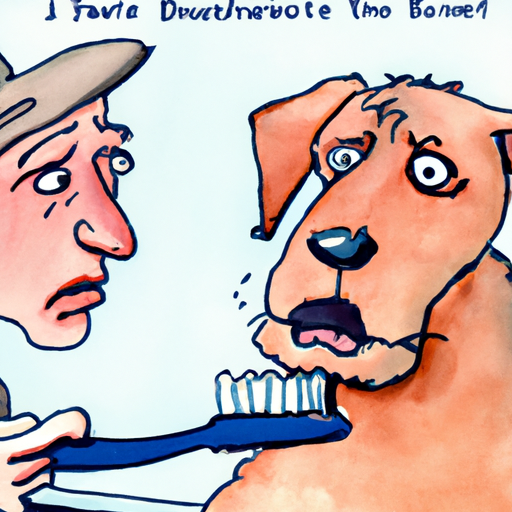H2: Why Is My Dog’s Gum Bleeding When I Brush His Teeth?
You might have noticed that your dog’s gums bleed every time you brush their teeth. This is not a normal occurrence and it could be a sign of an underlying health problem. Bleeding gums can be caused by a variety of factors, such as gum disease, trauma, or even a foreign object stuck in the gums.
Here’s a table to help you understand some common causes:
| Cause | Description |
|---|---|
| Gum Disease | This is the most common cause of bleeding gums in dogs. It occurs when plaque and tartar build up on the teeth and cause inflammation and infection. |
| Trauma | If your dog chews on hard objects, they can injure their gums and cause bleeding. |
| Foreign Object | Sometimes, a piece of bone or a stick can get stuck in the gums and cause bleeding. |
H2: How Can I Prevent My Dog’s Gums From Bleeding?
Prevention is always better than cure. Here are a few things you can do to prevent your dog’s gums from bleeding:
- Regular Dental Check-ups: Take your dog to the vet for regular dental check-ups. This can help catch gum disease early before it becomes severe.
- Proper Dental Hygiene: Brush your dog’s teeth regularly and provide dental chews to help keep their teeth clean.
- Monitor Chewing Habits: Keep an eye on what your dog is chewing. Hard objects can cause injury to the gums.
H2: What Should I Do If My Dog’s Gums Are Bleeding?
Don’t panic. Here are some steps you can take if your dog’s gums are bleeding:
- Stop Brushing: If your dog’s gums start to bleed while you are brushing their teeth, stop immediately. You could be causing more harm than good.
- Check for Foreign Objects: Look in your dog’s mouth to see if there is anything stuck in their gums.
- Contact a Vet: If the bleeding doesn’t stop, or if you suspect that your dog has gum disease, contact your vet as soon as possible.
H2: What Are The Signs Of Gum Disease In Dogs?
Gum disease can cause a lot of discomfort for your furry friend. Here are some signs to look out for:
- Bad breath
- Loose teeth
- Swollen, red, or bleeding gums
- Difficulty eating
- Drooling
- Changes in behavior
H2: What Is The Treatment For Gum Disease In Dogs?
The treatment for gum disease in dogs depends on the severity of the disease. Your vet may recommend:
- Professional dental cleaning
- Antibiotics to fight infection
- Scaling and root planing
- In severe cases, surgical treatment may be necessary
Frequently Asked Questions
Q: How often should I brush my dog’s teeth?
A: Ideally, you should brush your dog’s teeth daily. However, if that’s not possible, aim for at least three times a week.
Q: What kind of toothpaste should I use for my dog?
A: Always use a toothpaste that is specifically designed for dogs. Human toothpaste can be harmful to dogs.
Q: Can gum disease in dogs be reversed?
A: Early stages of gum disease can be reversed with proper dental care. However, severe gum disease can cause irreversible damage.
Q: Is gum disease in dogs common?
A: Yes, gum disease is very common in dogs. In fact, most dogs have some form of gum disease by the age of three.
Remember, your dog’s dental health is just as important as their physical health. Keep an eye on their gums and teeth, and don’t hesitate to contact your vet if you notice anything unusual.



